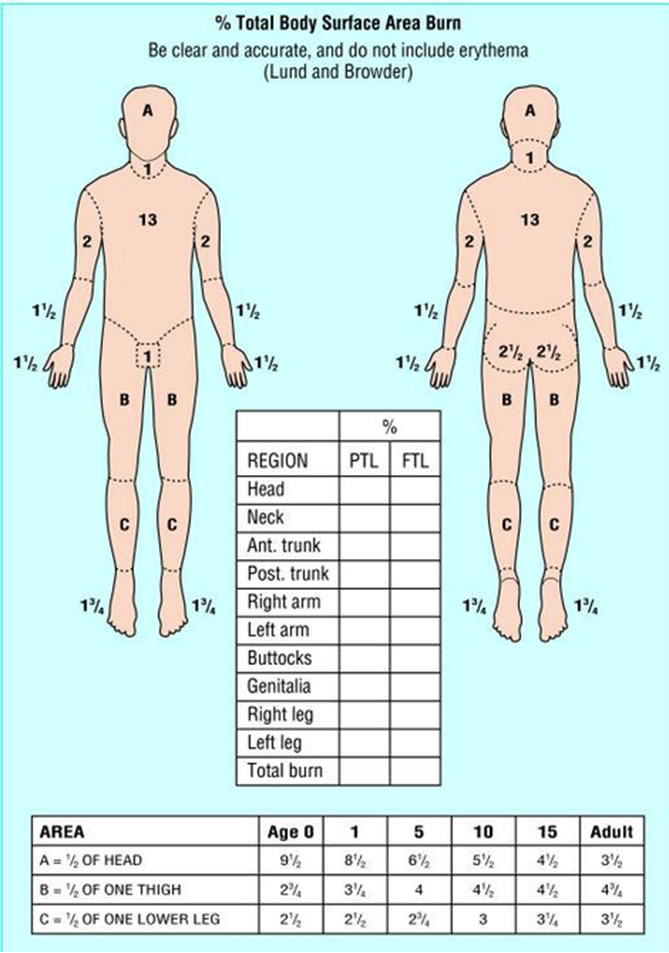
The surface area to body weight ratio in children is much higher than in adults. This ratio increases the younger the child. Children can therefore lose heat quickly and so are more prone to hypothermia. Hypothermia can occasionally be induced iatrogenically during resuscitation because of neglect of temperature control.
In order to assess a seriously unwell or injured child fully it will be necessary to examine and therefore expose (undress) them. Children become cold much quicker than adults and also may be embarrassed. Therefore, though necessary, it should be minimised. You should then keep the child warm (e.g. with a blanket).
Body surface area (BSA) is sometimes required to calculate drug dosages or calculate insensible fluid losses and is covered in the prescribing chapter.
A common equation used to calculate BSA is the Mosteller formula


When assessing the proportion of skin affected by burns etc then the Lund and Browder chart is the most accurate method for assessing body surface area (BSA) in children. It compensates for the change in body shape as children grow.
If this chart is not available then it a valuable rule to use is that the surface area of a patient's palm (including fingers) is roughly 0.8% of total body surface area. With this method the palmar surface can be used to estimate relatively small burns (< 15% of total surface area) (BMJ. 2004 Jul 10; 329(7457): 101–103. doi: 10.1136/bmj.329.7457.101).
The immune system at birth is immature and therefore these infants are more susceptible than older children to many infections. These include infections such as bronchiolitis, septicaemia, meningitis and urinary tract infections.
In utero, the foetus acquires maternal antibodies via the placenta. These antibodies provide “passive immunity” and therefore some early protection. However, these antibodies progressively decline during the first 6 months of life. These are then replaced over time by the infant‘s own antibodies. Breastfeeding will reduce the risk of some respiratory and gastrointestinal infections.